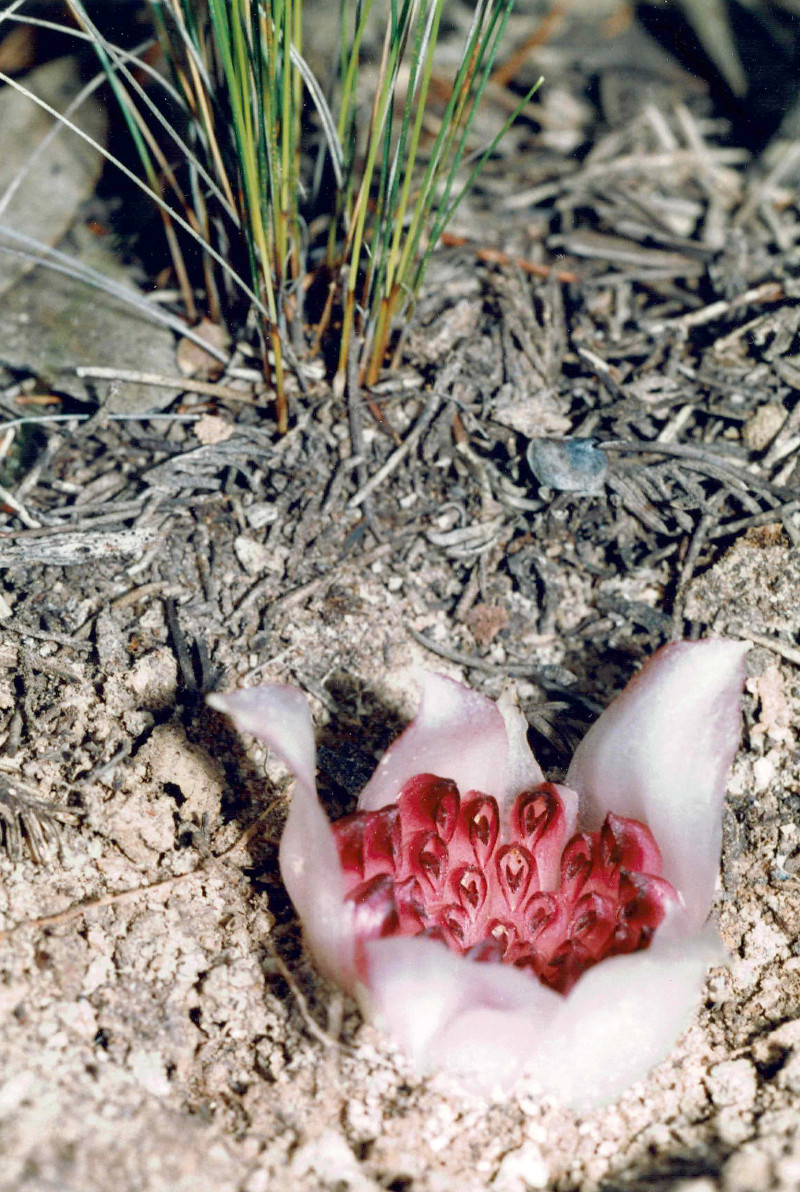Western Underground Orchid Facts
- Most notably, the incredible Western Underground Orchid remains unique in one outstanding manner. That’s because it actually lives and blooms entirely beneath the surface. Due to this unbelievable fact, this marvel of Nature remains an incredibly rare and remarkable type of plant. Therefore, regrettably, botanists cannot definitively ascertain just how many of these unique flowers may exist.
- In addition, the befuddling discovery, occurring in 1928 was entirely accidental since it is a subterranean species. Also, only 19 mature specimens are known to exist in the wild. The remarkable plant evolved as part of an extremely unique and specialized ecosystem. It appears to be entirely dependent upon the presence of a specific species of shrub and a specific variety of fungus.
- Finally, at the moment, the IUCN presently has no listing for the species on its Red List of Threatened Species. This occurs due to the understandable lack of sufficient information about the incredible plant. Nevertheless, the astounding Western Underground Orchid must be considered to be at some risk, at least. This likely holds true due to various factors, including the nature of its own environment.
Related Species
Western Underground Orchid Physical Description
Firstly, the Western Underground Orchid is an entirely subterranean plant. Secondly, therefore, the completely unique plant has no need for coloring. The chemical chlorophyll does not appear in its chemical composition. In addition, it boasts a white, leafless stem, and a flower head. Also, the flower head itself is made of 150 tiny, densely packed blooms. Yet it is tiny, averaging only 0.5 in (1.27 cm) across.
The most noteworthy characteristic of the Western Underground Orchid remains its utterly fascinating symbiotic development. It draws all of its nourishment from one rather rare species of shrub, the broom honey myrtle. This makes for a complicated system. A unique type of fungus also links the two plants. In fact, the orchid receives all of its nutrients, water, and carbon dioxide from the shrub, through the fungus.
- Kingdom: Plantae
- Phylum: Angiosperms
- Class: Monocots
- Order: Asparagales
- Family: Orchidaceae
- Genus: Rhizanthella
- Species: R. gardneri
Western Underground Orchid Distribution, Habitat, and Ecology
The fantastic Western Underground Orchid remains extremely rare. In point of fact, only a few specimens have ever been found. The full extent of the species’ range, therefore, remains uncertain at this time. However, all specimens discovered to date have been in the region of western Australia.
Though it’s unfortunate, botanists currently know little about the species because of its rarity. However, we do know that the remarkable variety of orchid blooms between May and June. We also know that, in another fascinating fact, it remains capable of both sexual and asexual reproduction.
Further, presumably, insects such as termites and gnats possibly serve as the principal pollinators of this species. This factor, much like so many others pertaining to the marvelous species, remains undetermined with certainty. Furthermore, the plants also appear to take 6 months to reach maturity.
The most serious threats to the amazing Western Underground Orchid consist of climate change and habitat loss. This holds true because bushland presently comprises its only known habitat. However, that obviously may not remain the case, as more information becomes available about the unique species.
Species Sharing Its Range
Check out our other articles on 6 Mysterious Natural Phenomena, Bee Hummingbird, Cango Caves, Sturt’s Desert Pea, Bornean Flat Headed Frog, Picasso Bug, Alligator Snapping Turtle

